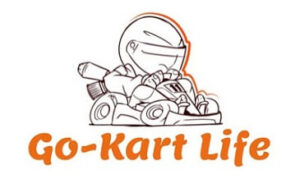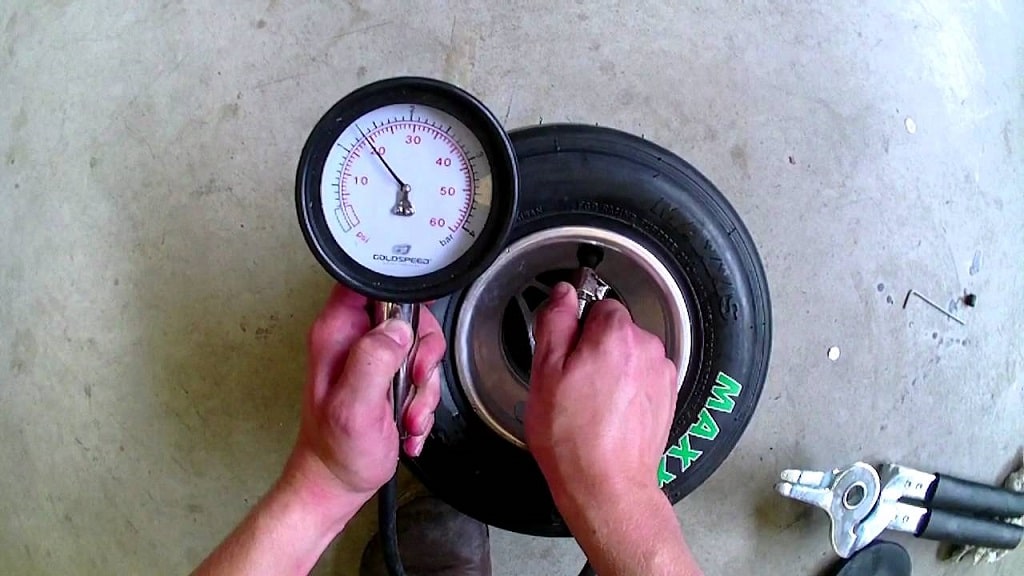Go-kart racing is a thrilling sport with numerous factors contributing to a successful race. One crucial aspect affecting track performance is the air pressure in your go-kart tires. This article will discuss the optimal air pressure range for go-kart tires, how it influences handling and top speed, and how to choose the right air pressure for each race.
This table summarizes the effects of different factors on optimal tire pressure for go-kart tires, helping you determine whether to use lower or higher pressure based on specific conditions.
| Factor | Lower Tire Pressure (More Grip) | Higher Tire Pressure (Less Grip) |
|---|---|---|
| Track Surface | Rough, bumpy tracks | Smooth, even tracks |
| Ambient Temperature | Cold days | Hot days |
| Tire Compound | Soft compounds | Hard compounds |
| Driver Weight | Heavier drivers | Lighter drivers |
| Tire Wear & Overheat | Faster wear, quicker overheating | Slower wear, more heat resistance |
Related Article: Ultimate Guide to Go-Kart Tire Pressure & Performance
Optimal Air Pressure Range for Go-Kart Tires
The optimal air pressure for go-kart tires ranges from 8 to 15 PSI (0.55 to 1.03 bars), with the precise value depending on factors like track surface, ambient temperature, and tire compound. Experiment with pressures within this range to find the perfect balance for maximum grip and performance.
Air Pressure’s Impact on Handling and Top Speed
Tire pressures directly affect your kart’s handling and top speed. By understanding how to adjust your tire pressures, you can enhance your performance on the track and potentially advance your racing career.
Lower tire pressures offer increased grip around corners but can result in a lower top speed. This is due to the larger surface area of the tire touching the ground, providing more grip. On the other hand, higher tire pressures reduce the contact between the tire and the track, leading to less grip but faster acceleration and a higher top speed.
Effect of Incorrect Air Pressure on Tire Wear
Having the wrong tire pressures can lead to uneven and accelerated tire wear. Underinflated tires have more surface area in contact with the track, causing them to heat up and wear out faster. Conversely, overinflated tires have less contact with the track, heat up slower, and tend to wear out more evenly.
Choosing the Right Air Pressure for Each Race
Selecting the optimal tire pressure for a race involves considering various factors, including the track conditions, kart setup, and weather. Since tire pressures affect how quickly tires heat up and overheat, you need to adjust them based on the temperature during race day.
For colder days, lower the tire pressures to help them build temperature more quickly. On hot days, increase the tire pressures to prevent overheating during the race. Additionally, consider the distribution of left and right turns on the track, as this will affect the tire pressures needed for optimal grip.
One useful tip is to drive a practice session and adjust the tire pressures to the optimal “hot” temperature (e.g., 12.5 PSI) immediately after returning to the pit. Allow the tires to cool down, and check their PSI before your next session. Record these pressures and experiment to find the perfect balance for each tire.
Related Article: The Ultimate Guide to Go-Kart Tires
Conclusion
Mastering tire pressures is essential for achieving peak performance in go-kart racing. By understanding the optimal air pressure range (8 – 15 PSI for cold tires), adjusting tire pressures based on various factors, and practicing consistently, you can improve your handling, top speed, and overall racing success. If you have any questions or need further guidance, don’t hesitate to reach out or comment below. Happy racing!
Frequently Asked Questions
It’s essential to pay attention to your kart’s handling while racing. You may need to adjust the tire pressure if you notice a decreased grip or your kart feels unstable. Remember that track conditions and weather can also affect tire performance, so be prepared to make adjustments as needed throughout the race.
While most tire pressure gauges should provide accurate readings, a gauge designed explicitly for go-kart tires or racing applications is recommended. These gauges often have a more precise scale and are built to withstand the rigors of karting.
It’s good practice to check your tire pressure before each practice session, race, or whenever you make significant changes to your kart’s setup. By regularly monitoring and adjusting the tire pressure, you can ensure optimal performance and prolong the life of your tires.

Goran, an experienced go-kart racer, fuels GoKartLife.com with his passion and expertise. He offers valuable insights and tips for fellow enthusiasts, fostering the growth of the go-kart community. Join Goran at GoKartLife.com and immerse yourself in this exhilarating sport.

